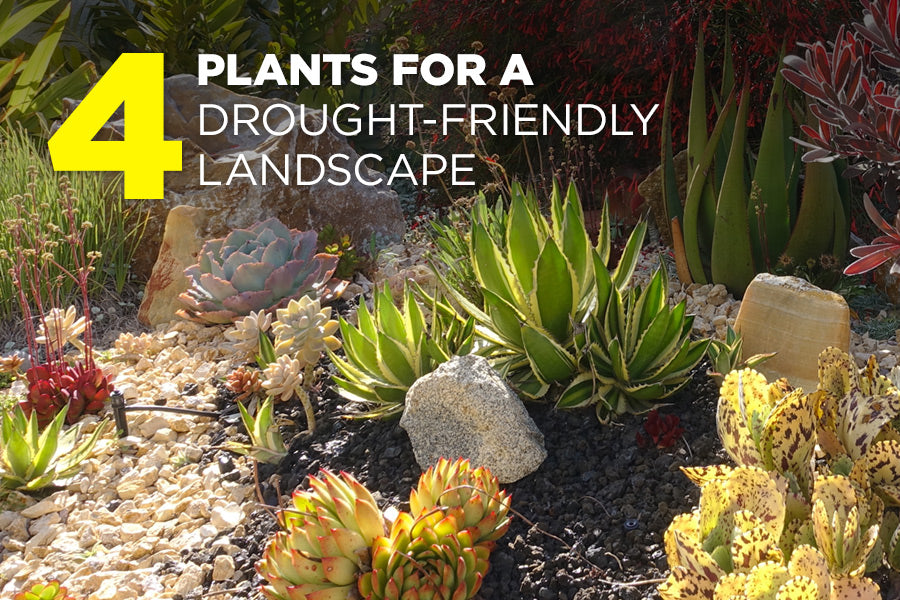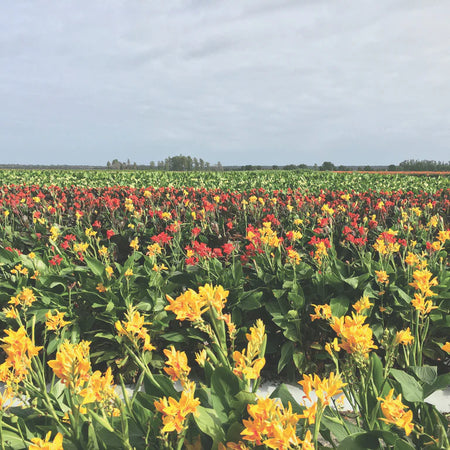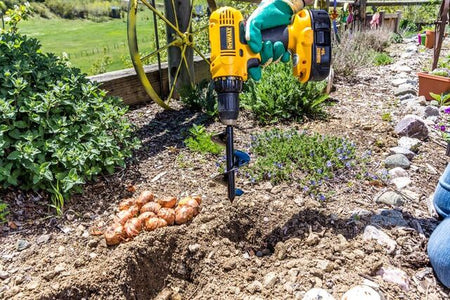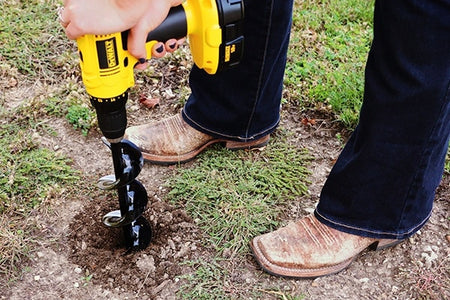While all plants need water, some with long, deep roots and thick, waxy leaves need less water than others as they’re most effective at conserving water and slowing the transpiration rate. These drought-tolerant plants are especially beneficial to have in your gardens during periods of little to no rainfall, which many parts of the country have experienced this year. They’re also perfect in drier cities.
Best of all, drought-tolerant plants can be just as bold and colorful as other plants in your garden. It doesn’t have to be just cacti and shrubs.
Which drought-tolerant plants to buy
To have a successful drought-friendly landscape, you need to include plants that not only survive periods of dry weather and little rainfall but actually thrive in those conditions. (These plants should be planted in summer or fall when water is plentiful. Consult the USDA Plant Hardiness Zone Map to learn which season is best for your specific location.) Here are some plants to consider:
- Coneflowers — Members of the daisy family, these fast-growing perennials are both heat- and drought-resistant, making them perfect for plant hardiness zones 3 through 9 (Montana, North Dakota, Florida, and Georgia) . While these plants do best in full sun and loose soil, they can also withstand heavy clay or rocky soils. Coneflowers are even pollinator-friendly, transforming your garden into an oasis for butterflies and bees.
- Yucca — This tough, spiky cactus with sword-shaped leaves and white flowers thrives in sandy, well-draining soil and full sun. It’s best for zones 4 through 10 (Nebraska, Vermont, Hawaii, and southern Florida), as long as it never sits in heavy soil in cold, wet areas for too long. When this happens, yucca can develop root rot and die.
- Creeping thyme — Though many thyme varieties are drought-intolerant, creeping thyme is perfect for dryer regions, like zones 3 to 8 (North Dakota, Maine, and parts of the South). As long as creeping thyme has full sun (at least six hours a day) and well-draining soil, you can plant it in your garden or along a stone path or use it as an alternative to grass in your lawn.. This plant even adds an aromatic, citrus scent to your drought-friendly landscape.
- California poppies — Less is more with California poppies. These self-sowing wildflowers don’t require much water or even great soil to thrive, only full sun. Best in zones 6 to 10 (Pennsylvania, New Jersey, and southern California), these pink and orange flowers resemble a sunset once they fully bloom.
- Artemisias — Foliage plants like artemisas, which are known for their decorative, variegated leaves (having at least one other color than green), are a perfect addition to any drought-friendly landscape. These aromatic, hardy shrubs and herbs are best for zones 4 to 8 (most of New England down to southern states like Florida and Louisiana), in areas with full sun and well-drained soil.
How to establish drought-tolerant plants
In any garden, you should establish your plants, meaning you nurture them enough through the first year or two so that they can thrive with minimal intervention in the future. Try the following in your garden:
- Use a garden auger to drill your planting hole at least two times as wide as the diameter of your plant’s rootball.
- Place your plant in the hole and refill the hole with three-quarters of the removed soil and one-quarter compost to strengthen soil and retain moisture.
- Thoroughly water the plant close to the rootball, not where the roots grow and expand underground. Be sure the water permeates the upper layers of the earth. Constructing a small moat around your plant can help keep water in place.
- Mulch the soil surface around the plant with more compost and other organic matter to minimize soil water loss.
- Water every few days or weeks, whenever the soil is too dry. (There is no magic number of when to water again, so check the soil’s moisture every few days.) You only need to water your drought-tolerant plants for a growing season or two. Once the plant has been established, it’ll prosper well on its own.

With the right tips, tools, and a little bit of patience, building a drought-friendly landscape can be easy and fun. Most importantly, it greatly reduces water usage, which is good for the environment and your wallet.







